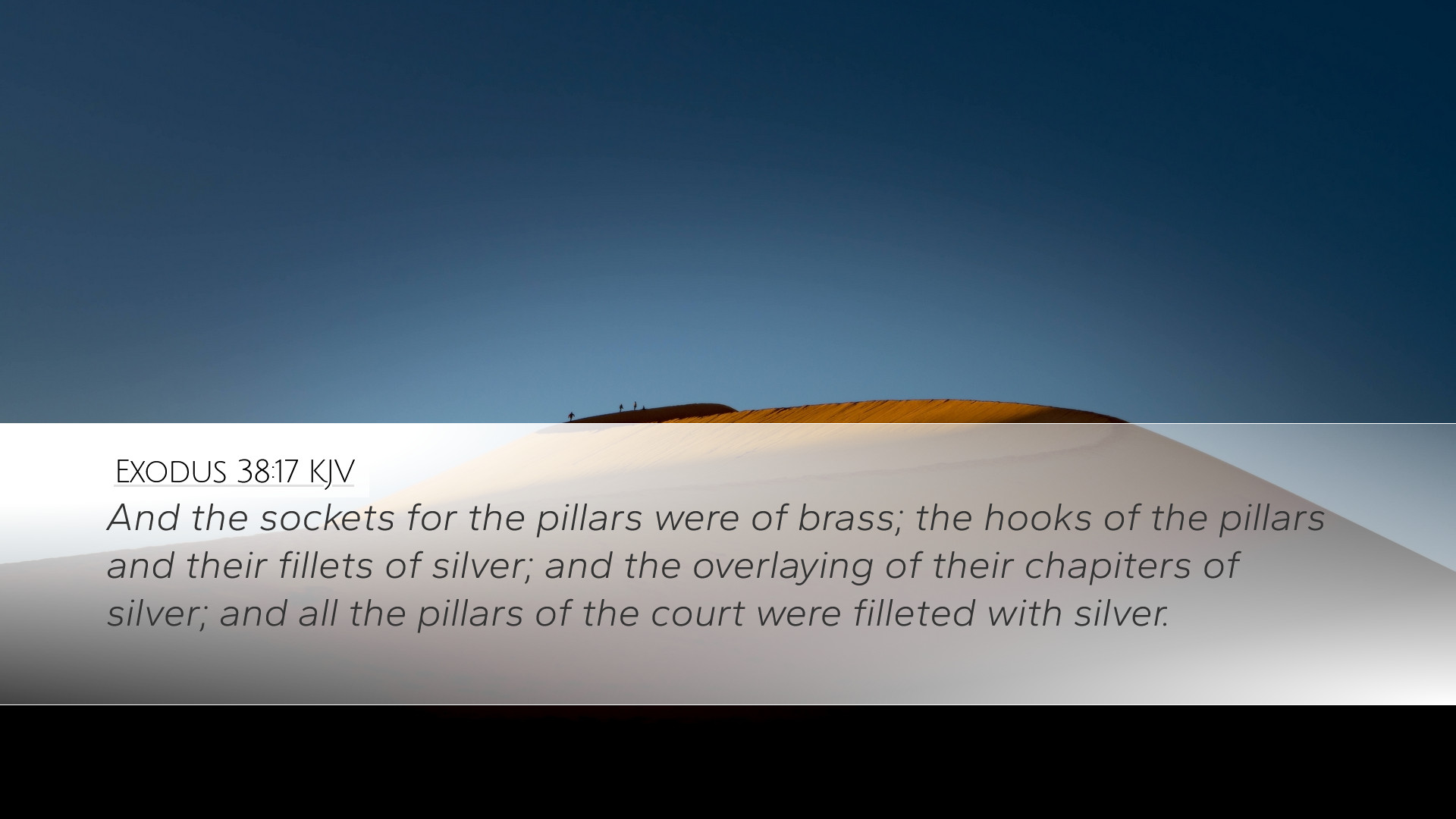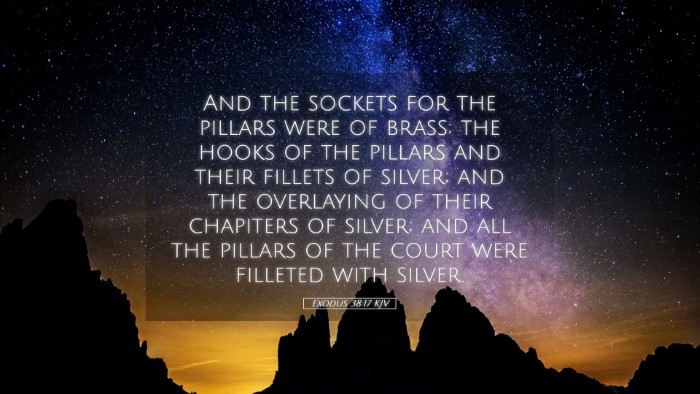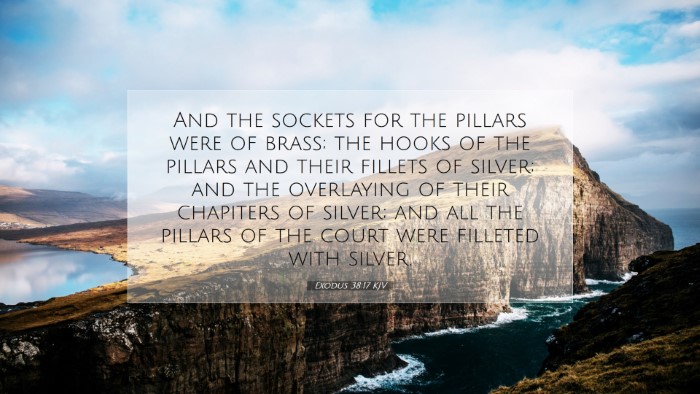Exodus 38:17 Commentary
Verse: “And the sockets for the pillars were of brass; the hooks of the pillars and their fillets were of silver; and the overlaying of their chapiters was of silver: and all the pillars of the court were filleted with silver.”
Introduction
This verse is part of the detailed instructions given to Moses regarding the construction of the Tabernacle and its associated elements. The materials used and their symbolic meanings shed light on the importance of holiness and beauty in worship. Understanding the significance of these elements provides deep insights into God’s design for His dwelling place among His people.
Material Significance
- Brass: The use of brass for the sockets of the pillars denotes strength and durability. Brass, being an alloy of copper and zinc, symbolizes the lasting nature of God's promises and His eternal covenant with His people. It is also often associated with judgment in Scripture.
- Silver: The hooks and the fillets of the pillars were made of silver, signifying redemption. Silver is often viewed as a symbol of purity and refinement, which reflects the work of Christ in redeeming humanity. It foreshadows the price paid for redemption, as in the biblical account of the thirty pieces of silver, which evokes the theme of betrayal leading to the salvation of many.
- Chapiters: The overlaying of the chapiters with silver suggests a divine grace that beautifies and adorns what might otherwise be plain and ordinary. This act of beautification reminds believers of God's desire to glorify His creation and His people.
Theological Themes
This passage encapsulates several theological themes crucial for understanding Israel's relationship with God.
- The Presence of God: The Tabernacle represented God's dwelling among His people. The materials chosen highlight the sacredness of this dwelling and the reverence required in approaching God.
- Holiness and Separation: The distinction between the materials used reflects an underlying theme of holiness. Brass and silver serve to delineate the sacred from the common. Those things dedicated to God must be of the highest quality, symbolizing His majesty.
- Divine Order: The meticulous instructions for the construction reflect not only the importance of order in worship but also God's desire for His people to follow His commands precisely. Obedience leads to blessings and communal unity.
Historical Context
Exodus occupies a foundational place in the narrative of Israel as a people chosen by God. The specific instructions for the Tabernacle come after the Israelites' deliverance from Egypt, as they prepare to enter into covenantal relationship with God at Sinai. This preparation is not merely about physical structures but about establishing a new identity as the people of God.
Comparative Insights
Matthew Henry notes the beauty and order in the elements of the Tabernacle, emphasizing that they reflect God's perfect character. Albert Barnes elaborates on the significance of each material, connecting them to broader themes of redemption and holiness consistent throughout the biblical narrative.
Adam Clarke further suggests that these materials prefigure the reality of Christ and the ultimate tabernacling of God with humanity, culminating in the New Testament revelation of Christ as the true temple.
Practical Applications
- Worship and Aesthetics: The verse underlines the importance of beauty in worship. Leaders and congregations are encouraged to consider the aesthetics of their worship spaces as an expression of reverence for God.
- Quality in Service: Just as the materials used were of high quality, believers are called to offer their best to God in service, worship, and daily living. Mediocrity should not characterize offerings to the Almighty.
- Reflection on Redemption: Silver symbolizes redemption; thus, reflecting on this aspect encourages believers to live in light of the redemption they have received through Christ and to share that message with others.
Conclusion
Exodus 38:17, while seemingly a simple description of construction materials, resonates deeply with themes of beauty, holiness, and divine presence. The materials not only structure the Tabernacle but also serve as metaphors for God’s relationship with His people. Pastors and theologians are encouraged to delve into these rich layers of meaning, enriching their understanding and teaching of scripture and ultimately cultivating a more profound appreciation for the sacredness of God’s dwelling place among His people.


